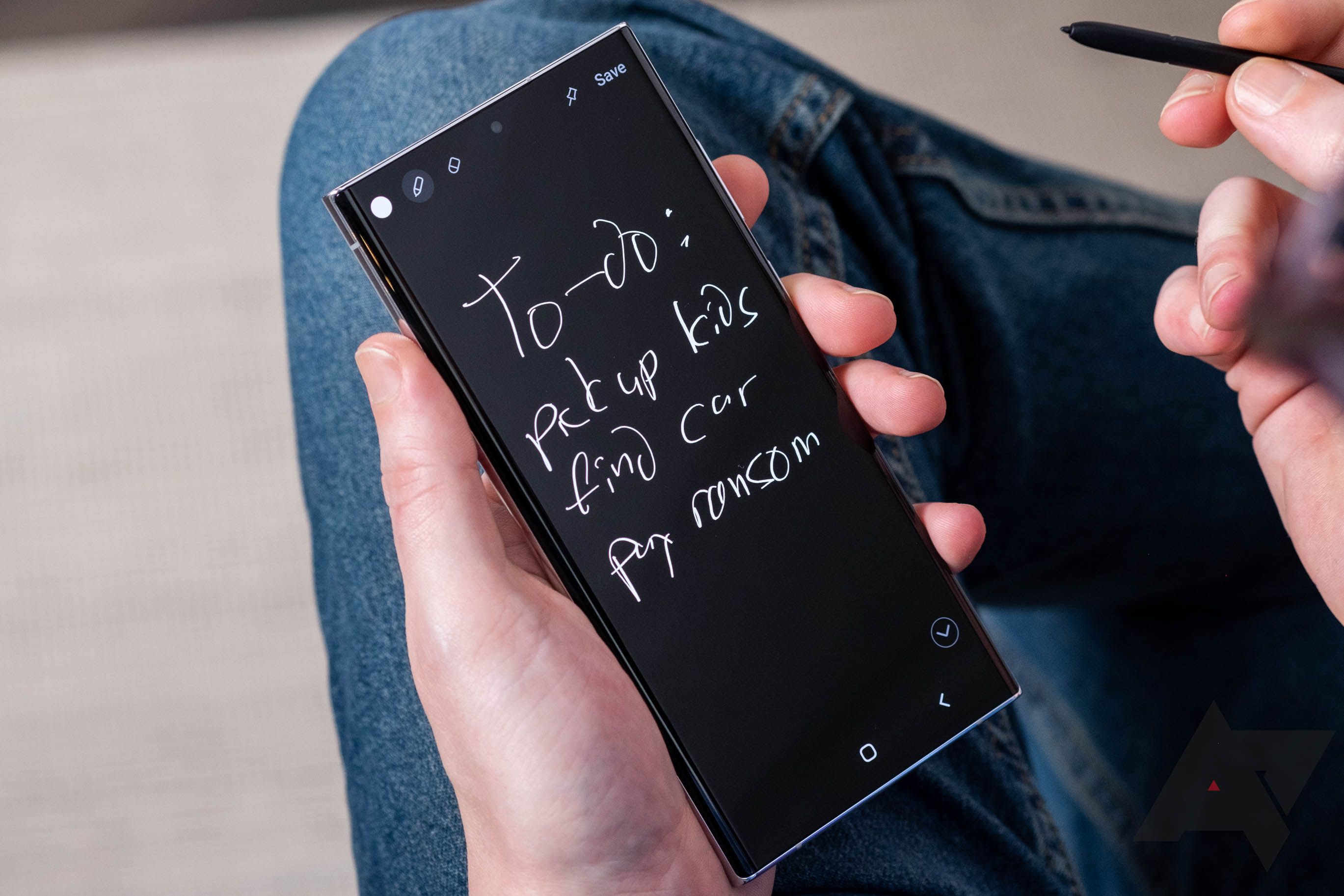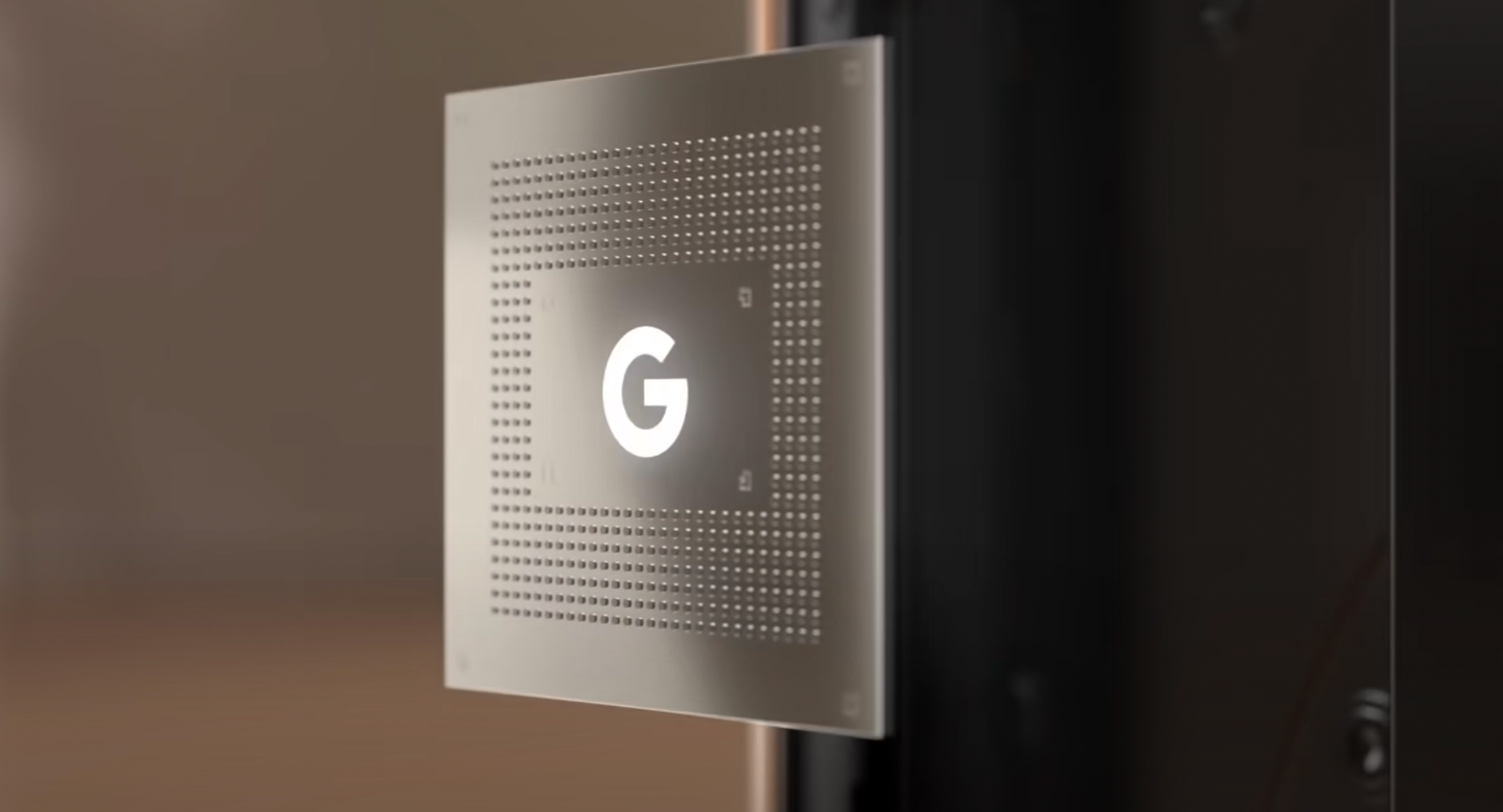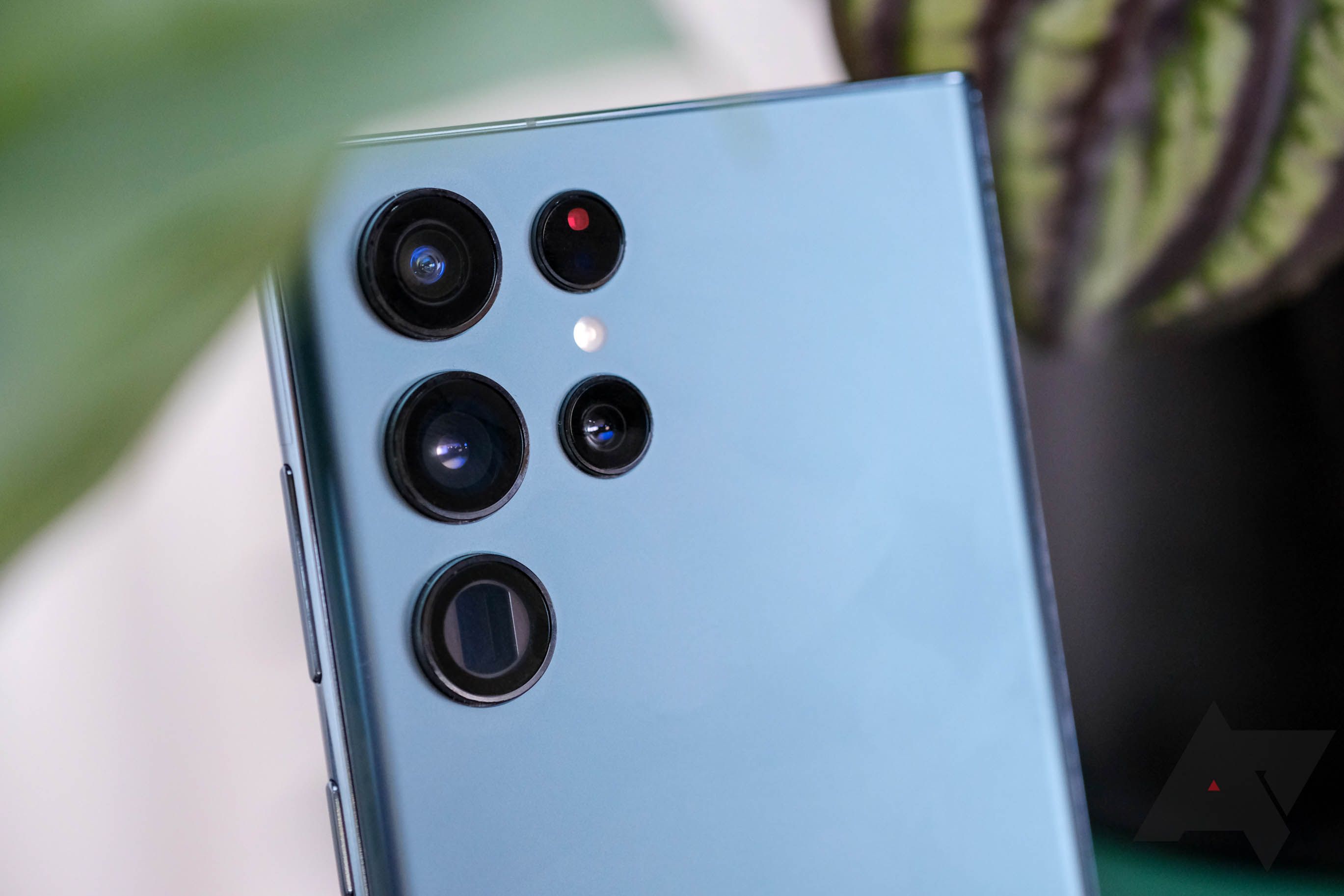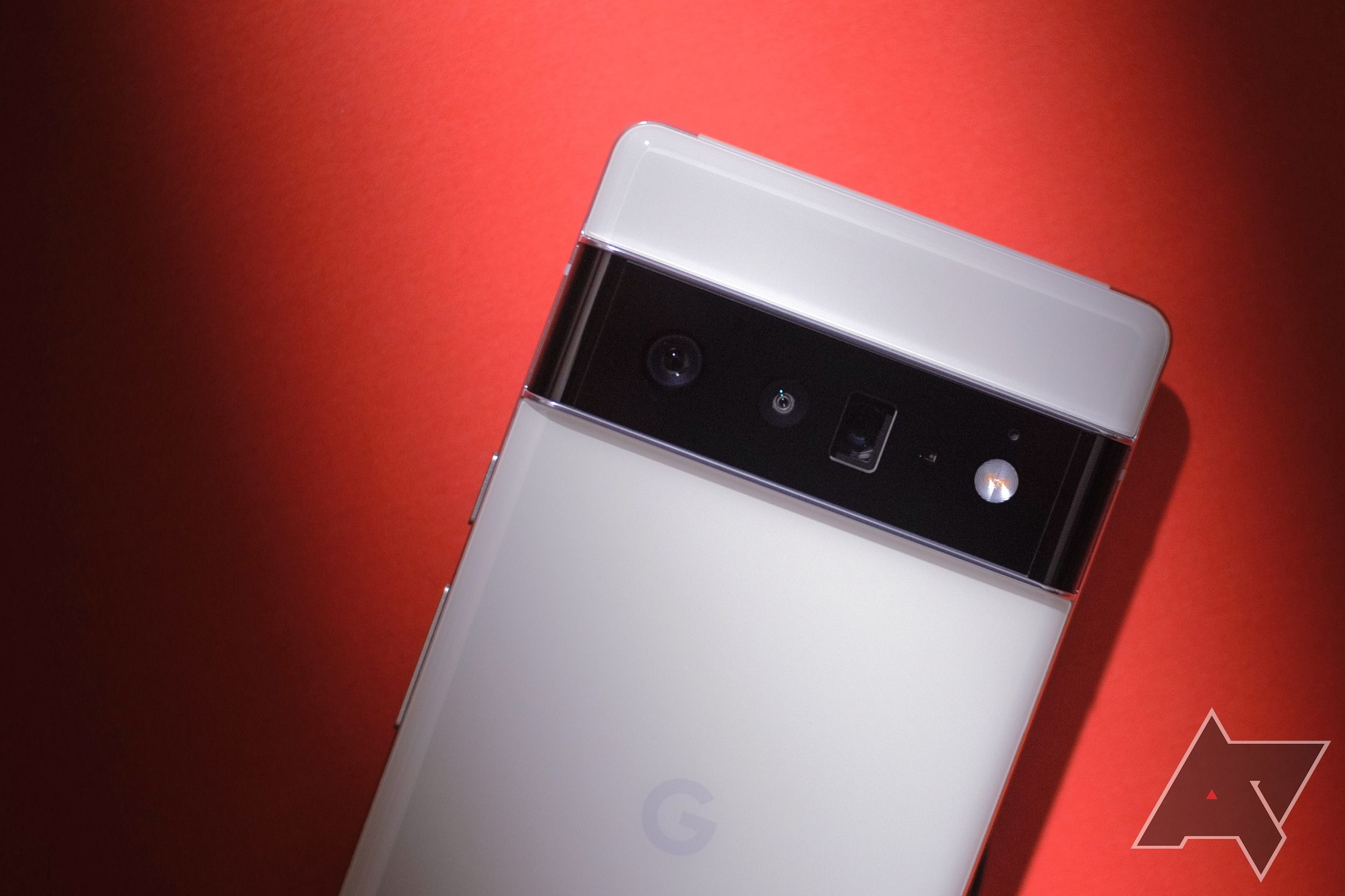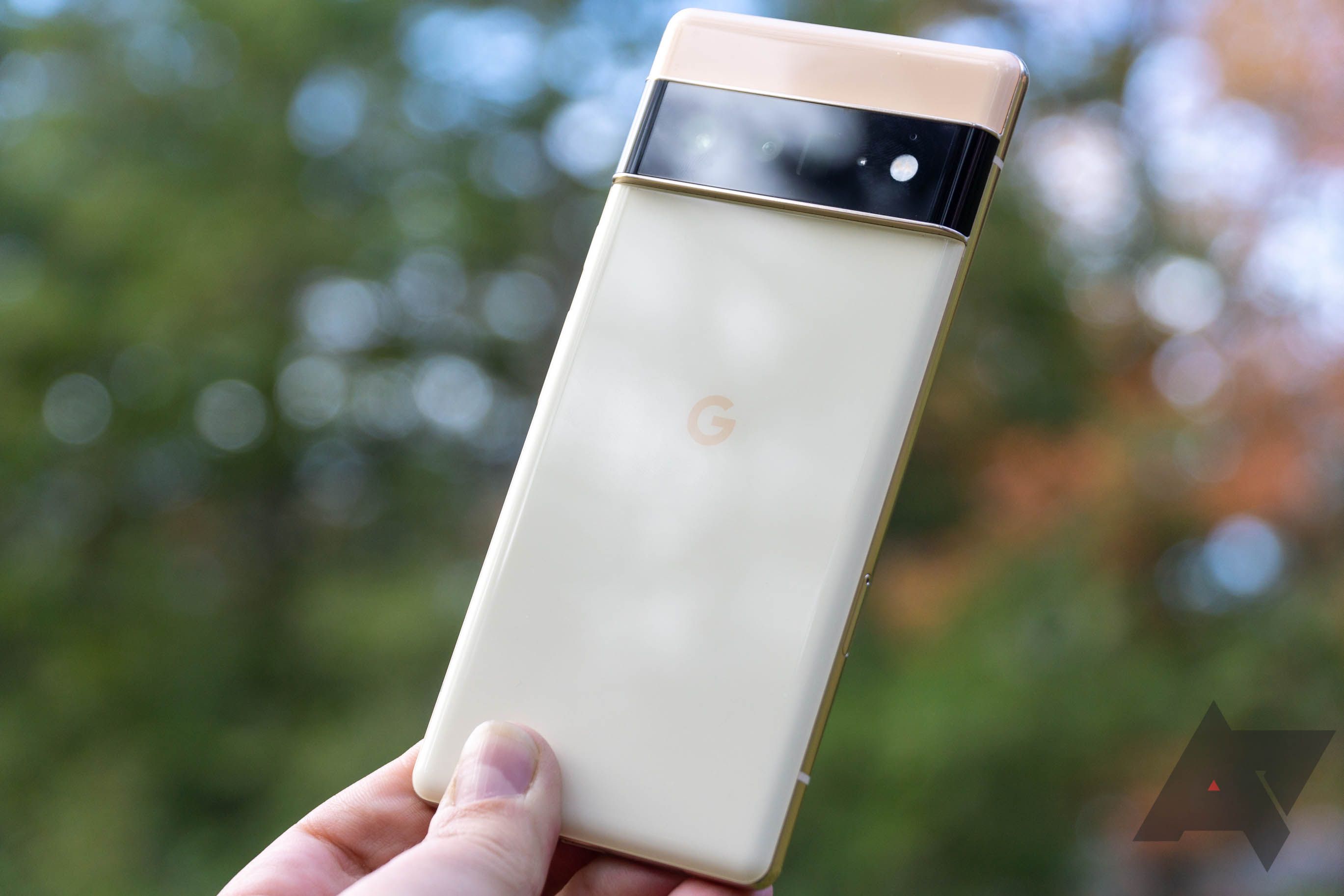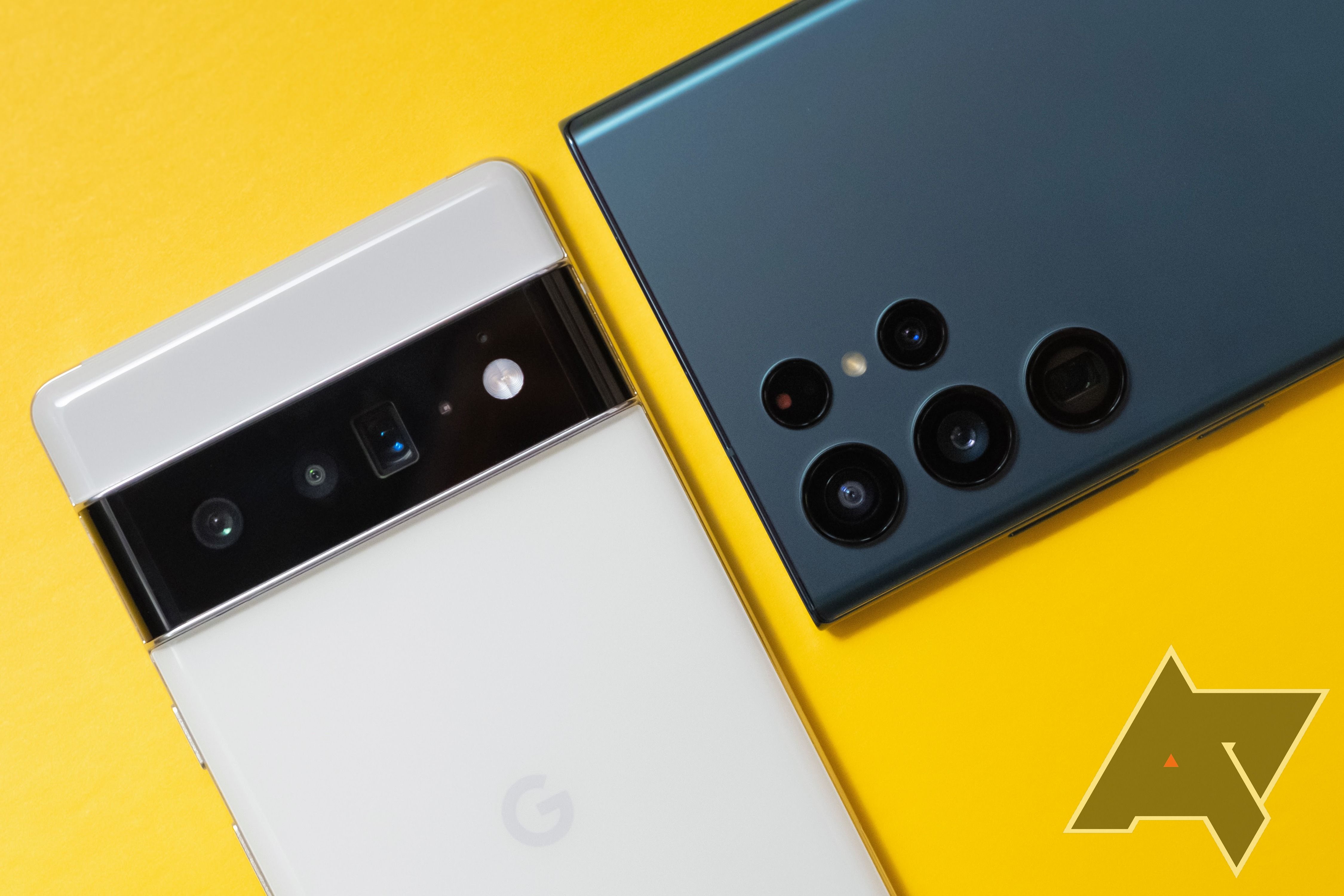-
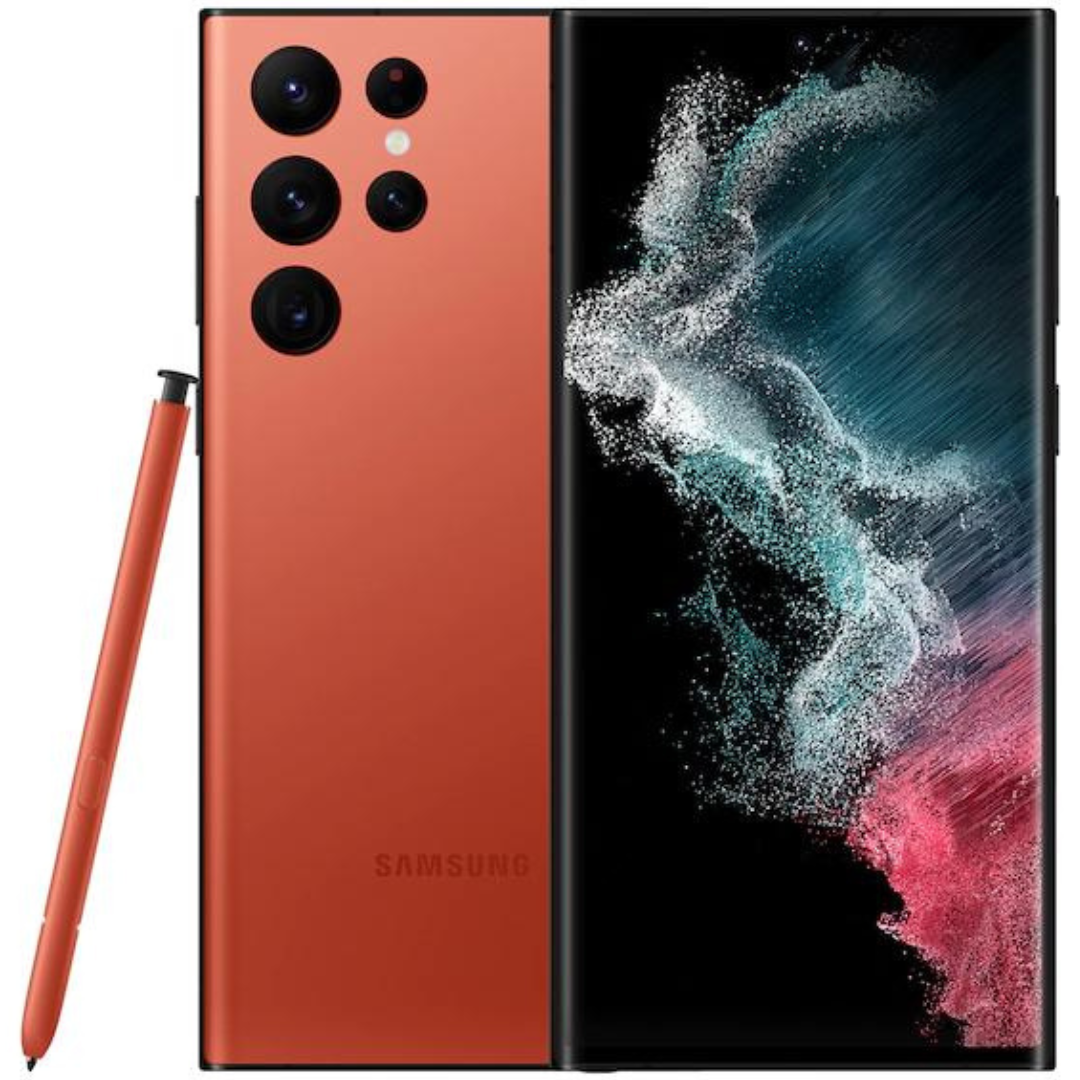
Samsung Galaxy S22 Ultra
Samsung's 2022 flagshipThe Samsung Galaxy S22 Ultra remains a great flagship phone, with a sleek design, fantastic cameras, and included S Pen stylus. It's no longer Samsung's latest, but it's aged well and still has years of software support to go, so there's still a good case to be made for picking one up.
Pros- Beautiful display
- Great software support
- Integrated S Pen
Cons- Massive size
- Expensive
-
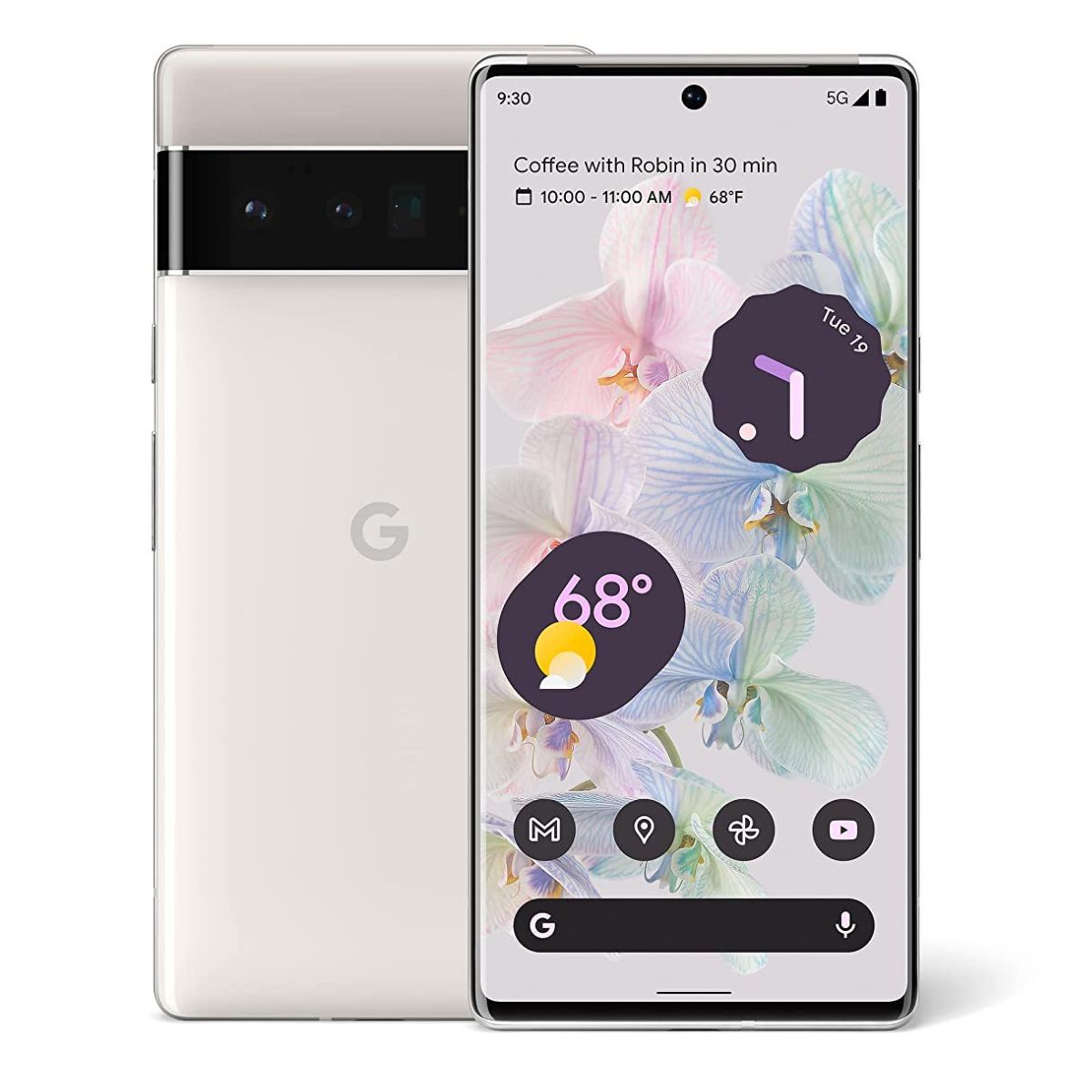
Google Pixel 6 Pro
2021's Pro Pixel$585 $899 Save $314The Pixel 6 Pro has since been supplanted by both the 7 Pro and 8 Pro, but if you can find one for cheap there's still a lot to love. This is a reliable and quality option featuring a great camera and solid performance, though the battery life leaves something to be desired.
Pros- Excellent cameras
- Great software experience and support
- Value for money
Cons- Poor battery life
- Buggy fingerprint scanner
- Sub-par connectivity performance
The Samsung Galaxy S22 Ultra was Samsung's new flagship model in 2022. It represented the best the company had to offer and, in many ways, marked the unification of the Galaxy S and Galaxy Note lines. Given Samsung's prowess when it comes to impressive hardware, it's no surprise that the Galaxy S22 Ultra ranked highly among the best Android phones that year.
On the other hand, despite launching a few months earlier in October 2021, the Google Pixel 6 Pro feels older - after all, it's had two follow-ups since then. Still, like most premium smartphones, each has its own pros and cons, so it can be tough to decide which one is better for your needs. Let's take a look at how the Samsung Galaxy S22 Ultra and the Google Pixel 6 Pro compare to one another.
Price, availability, and specs
The Google Pixel 7 Pro and Pixel 8 Pro have now superseded the Pixel 6 Pro. With this handover, the 6 Pro has fallen out of the Google storefront, but you can still find it on sale through third-party retailers. The newer-gen Pixels are both much better devices since Google fixed almost all the shortcomings of the older model, but of course the 6 Pro is now frequently available for much less.
Similarly, the Galaxy S23 Ultra has found its way onto shelves, dating the S22 Ultra a little. More surprisingly, the Samsung hasn't been discounted as frequently as Google's former flagship, and if you aren't able to find the S22 Ultra for less than $1,000 then the similar cost of the newer model, alongside its improved thermals and performance, make it the better Samsung selection.
-
Samsung Galaxy S22 Ultra Google Pixel 6 Pro SoC Qualcomm Snapdragon 8 Gen 1 Google Tensor RAM 8GB, 12GB 6.7” QHD+ (1440x3120 pixels, 19.5:9) LTPO OLED, 120Hz, Gorilla Glass Victus Storage 128GB, 256GB, 512GB, or 1TB 12GB Battery 5,000mAh 128, 256, 512GB Ports USB-C 5003mAh Operating System Android 13, One UI 5.1 USB-C Front camera 40MP f/2.2, 26mm Android 12 (upgradeable to Android 14) Connectivity NFC, UWB 11.1MP f/2.2 (94° FoV, fixed focus) Dimensions 163.3 x 77.9 x 8.9mm 5G mmWave, Wi-Fi 6E (802.11ax), Bluetooth 5.2, NFC, Ultra-Wideband Colors Phantom Black, Phantom White, Green, Burgundy + Samsung.com exclusive Red and Sky Blue 163.9 x 75.9 x 8.9mm Price From $1,200 Sorta Sunny, Cloudy White, and Stormy Black
Design
As with many premium smartphones, the Samsung Galaxy S22 Ultra and Google Pixel 6 Pro feature an aluminum chassis with glass panels anchoring the device's front and rear. In addition, they are both IP68 certified, pack stereo speakers for great sounding audio, and have eliminated the headphone jack from their overall format.
Despite being a Galaxy S series phone, the S22 Ultra builds on the design of the Samsung Galaxy Note 20 Ultra, sporting a flat top and bottom edge with rounded sides. It's complemented by the 6.8-inch QHD display's curved edges, making the phone supremely easy to handle despite the genuinely large size.
Samsung has also managed to neatly integrate the camera ridges into the phone's body, a far cry from the gigantic hump prominently featured on the back of each Pixel 6 phone. The dedicated S Pen slot on the bottom left makes it easy to scribble notes or doodle, as well, without having to wonder how you'll carry the accessory. The S Pen has also been revisited for the S22 Ultra, with a rubberized texture making it nicer to hold.
.JPG)
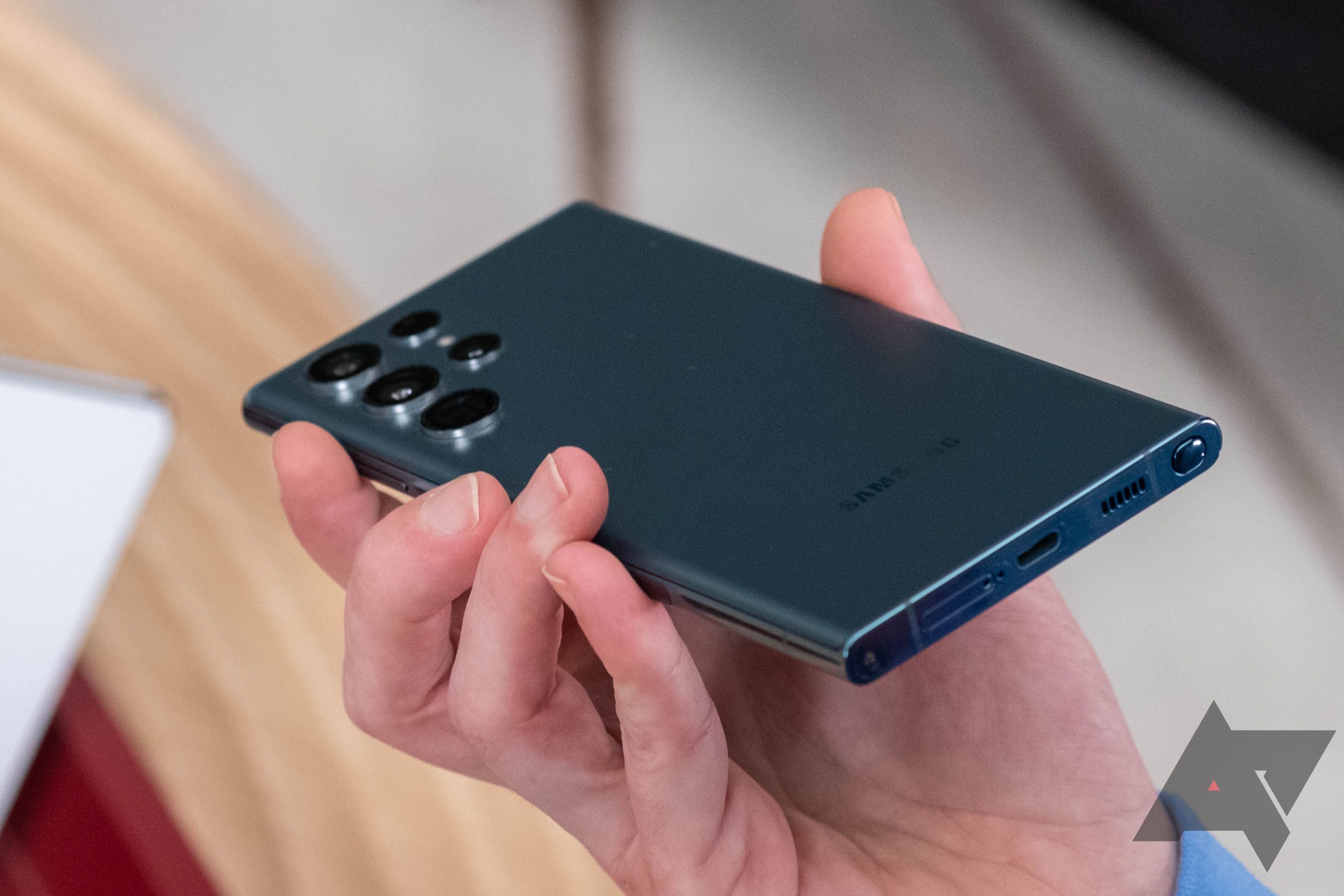
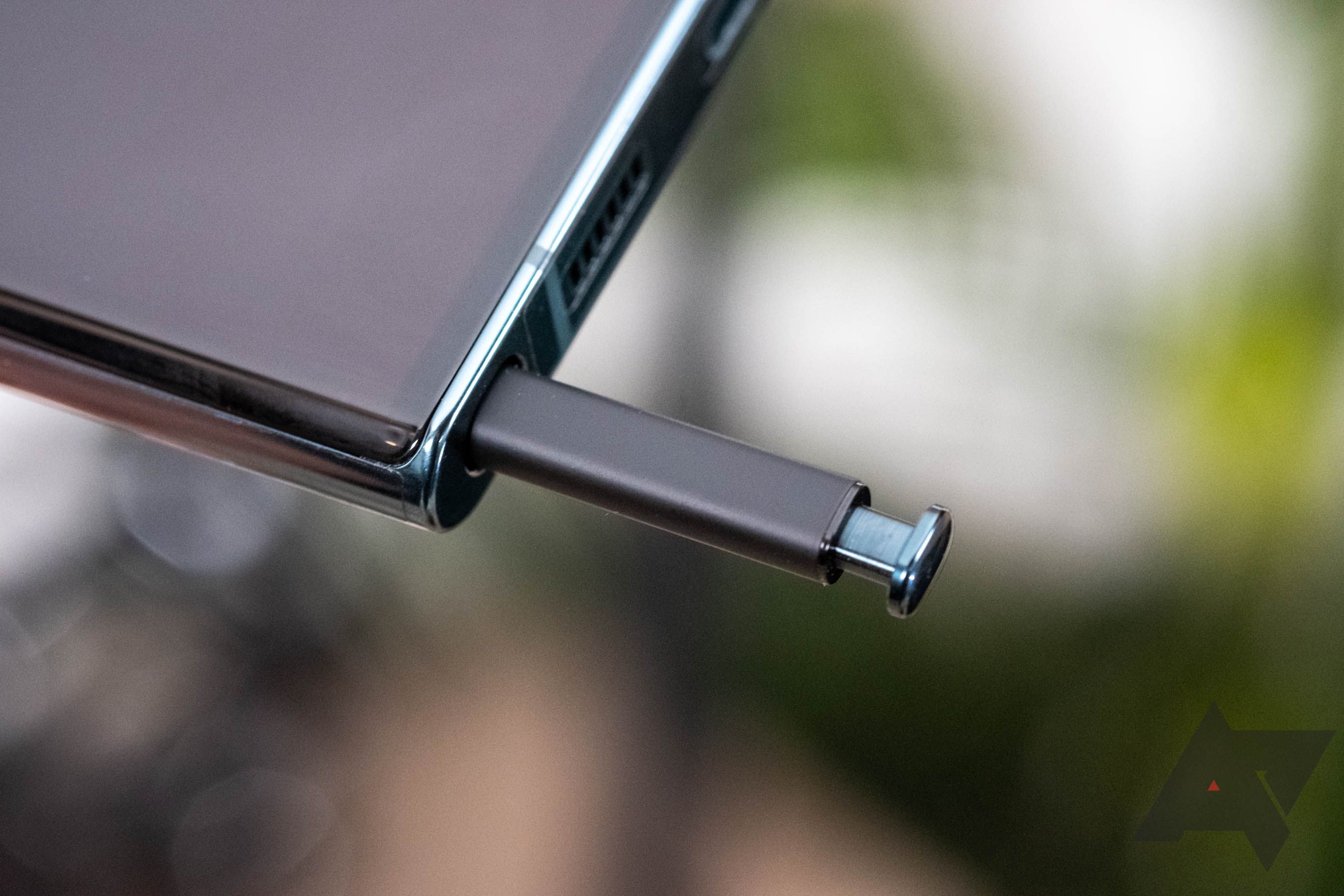
As for the Pixel 6 Pro, its design has a lot more character, with the dual-tone back and the massive visor-like camera strip. It's important to note that these are both truly massive devices, so if you don't like big phones, you might want to seek other options that don't include either "handheld."
Display
Nearly every flagship launched in recent years comes loaded with an incredible display, and the Pixel 6 Pro is no exception. However, Samsung phones have continually pushed the boundaries of smartphone display quality, and the outlet unsurprisingly raised the bar again with the Galaxy S22 Ultra. The S22 Ultra's 6.8-inch AMOLED display can reach a peak brightness of 1750 nits, far higher than the Pixel 6 Pro's 800 nits.
In terms of size, the display panels on the two phones provide very much the same experience — 6.8 inches on the S22 Ultra vs. 6.7 inches on the Pixel 6 Pro. They both also feature QHD+ resolution with curved edges. The S22 Ultra is finished with a Gorilla Glass Victus+ display panel, while the Pixel has been put together using regular Victus glass. They also both feature in-display fingerprint scanners, though the Pixel's scanner is slow and sometimes inaccurate, leading to a far more frustrating user experience. The Galaxy S22 Ultra's ultrasonic sensor is much better in this regard.
Chipset
The Galaxy S22 Ultra ships with the Qualcomm Snapdragon 8 Gen 1 or Exynos 2200 chipset, depending on where you buy the phone. Both are fabricated on the 4nm process and are 2022's flagship chips, offering notably superior GPU and AI/ML performance compared to previous generation offerings.
The Pixel 6 Pro is powered by Google Tensor, the company's first custom smartphone chip. It has a lot in common with Samsung's Exynos 2200, with some added enhancements and modifications from Google to boost machine learning and incorporate newly improved AI performance. This SoC helps the Pixel 6 Pro provide exclusive features like Magic Eraser, Face Unblur, instant voice typing with punctuation, and emoji support. While these improvements open up a new versatility in Google devices, the Tensor chipset has caused Pixel 6 owners a lot of headaches. Google has worked out many of the kinks, but a few remain to dampen the performance and user experience just a bit.
According to AnTuTu Benchmark scores, the Galaxy S22 Ultra scores slightly higher than the Pixel 6's Tensor SoC, clocking in at 912577 versus the Pixel's 716898. But in real-life scenarios, both phones deliver flagship-level performance and can easily handle heavy workloads, including those that even the most demanding users place on them. For example, you can run as many apps and play as many high-end games as you want without running into performance hiccups with both models.
Sustained load is where the two phones start struggling. An extended gaming session of Genshin Impact or recording a lot of 4K videos in harsh sunlight will be enough to begin throttling each of the devices' chips. Power efficiency is not the forte of either chipset as well. No wonder Qualcomm launched the TSMC-fabricated Snapdragon 8+ Gen 1 to address the heating and efficiency issues.
Storage, RAM, and speed
Samsung has always provided plenty of RAM and storage on its devices, but the S22 Ultra is an exception. The Pixel 6 Pro ships with 12GB RAM as standard across the board, while the S22 Ultra base model offers a more run-of-the-mill 8GB RAM. Surprisingly, that's even less than the S21 Ultra from last year. You can, however, upgrade to a higher storage model to get 12GB RAM. The base models of the two phones ship with 128GB of storage, but while the Pixel tops out at 256GB, the S22 Ultra is available in 256GB, 512GB, and 1TB configurations.
Another important point to note: While Samsung and Google have equipped their phones with 5G, UWB, Wi-Fi 6E, NFC, and Bluetooth 5.2, the Pixel uses an underperforming Exynos modem that tests have shown is not as effective as the competition when it comes to 5G connectivity. The S22 Ultra has a major advantage in this department, as it uses a newer 5G modem from Qualcomm, which theoretically allows it to reach higher 5G speeds and lands it among our picks for the best 5G phones. Apart from faster speeds, The Samsung S22 Ultra also provides a better generalized connectivity experience.
Camera
The Galaxy S22 Ultra packs a higher resolution 108MP primary shooter with f/1.8 aperture and OIS. By comparison, the Pixel 6 Pro has a 50MP f/1.9 sensor with OIS. Both phones use pixel binning to output photos around 12MP in resolution. Google's phones are known for their camera capabilities, and the Pixel 6 Pro raises the bar in terms of what these devices can capture. Still, Samsung has made solid AI and image processing improvements with its phone this year, especially in low-light scenarios.
There's a 12MP f/2.2 ultra-wide camera on both phones, though the lens on the S22 Ultra has a slightly wider FoV: 120° versus 114° in the Pixel 6 Pro. The Pixel's ultra-wide camera is not as good as its primary sensor, while Samsung's ultra-wide shooter tends to do a decent job as long as there's enough light. There's a difference in their telephoto setup as well, with the S22 packing a more versatile build consisting of a 10MP f/2.4 3x optical zoom camera and a 10MP f/4.9 periscope shooter with 10x zoom. With some AI magic and the 10x telephoto camera, the S22 Ultra can provide up to 100x Space Zoom. The Pixel 6 Pro features a 48MP f/3.5 telephoto lens offering 4x optical zoom and up to 20x Super Res Zoom.
The Galaxy S22 Ultra is notably more adept than the Pixel 6 Pro in the video recording department, both in terms of quality and integrated features. Apart from 8K video recording, the S22 Ultra offers Auto Framing, a feature that can automatically keep your subject squared up within the frame. There are plenty of other camera features and video modes to play around with, too. Samsung also uses a Super Clear Glass lens on the phone, which it claims should help reduce nighttime flares.
As for the front cameras, the S22 Ultra's 40MP selfie shooter has autofocus allowing it to capture sharper selfies. The Pixel 6 Pro's 11MP camera is pretty decent, as well, but gets edged out by the Galaxy phone. In addition, the Pixel's wider field of view will allow you to fit more people in a selfie.
Battery life and charging speed
The Pixel 6 Pro and Galaxy S22 Ultra each pack a hefty 5,000mAh battery within their frames. Coupled with the adaptive refresh rate and LTPO displays, they should both easily provide all-day battery life, but with heavy use both phones may require you to plug them in at some point to finish off your afternoon or evening.
The Pixel 6 Pro seems to fare worse than its competition here, thanks to an inefficient modem. The initial Android 13 build only worsened matters, with many Pixel 6 users reporting increased idle battery drain. With newer updates, Google has fixed this issue, but you can expect to need a charge more often with the Google platform, even with the updates.
Samsung's Galaxy S22 Ultra has a clear advantage in the charging department — it can go from empty to 100% in less than an hour with a 45W charger. In comparison, Google recommends using its 30W USB-C power adapter with the Pixel 6 Pro, an accessory that only pulls around 23W of power. While it's good enough to charge the battery to 50% in 30 minutes, a full charge takes well over an hour. Unfortunately, neither phone comes with a bundled power adapter, so regardless of which model you choose, you'll have to spend a little extra on charging equipment if you don't already have the required gear.
The Pixel and Galaxy both support wireless charging and reverse wireless charging. The Pixel 6 Pro only charges at 23W speed with the 2nd-gen Pixel Stand, and even then, a full charge takes quite some time. The S22 Ultra can be wirelessly charged at 15W on any Qi-compatible fast charger.
Which one should you buy?
The Galaxy S22 Ultra is the better phone for a number of key reasons: it offers a better display, the bundled S Pen accessory, faster charging speeds, a more versatile camera setup, and a superior 5G modem that makes it far more adaptable.
The company has also stepped up its game in the updates department and promises four years of OS updates and five years of security patches for the S22 series. This is even better than the Pixel 6 series, which is slated to receive three years of OS updates. If you'd rather not compromise on stability and have the money to spare, the Samsung Galaxy S22 Ultra is the better buy.

Samsung Galaxy S22 Ultra
The Galaxy S and Note hybrid we all wanted
The Samsung Galaxy S22 Ultra packs everything you'd want from a flagship phone: a massive 6.8-inch QHD+ display, oodles of RAM and storage, an impressive camera setup consisting of a primary 108MP shooter, and a 5,000mAh battery.
The Pixel 6 Pro certainly wins on price, but the problem is that Google's 2021 flagship phone has been marred with other issues that keep it from competing fully with the best of the best. You get a fantastic software experience and a great camera, but that's about it.
The battery life woes mean using the phone as a daily driver can be a struggle, especially if you rely on your phone for heavy communication or entertainment throughout the day. With Google no longer selling the Pixel 6 Pro, you're better off getting the Pixel 7 Pro or 8 Pro if you want a Google phone unless you find the 6 Pro at a really steep discount.

Google Pixel 6 Pro
Experience Android the way Google wants you to
The Google Pixel 6 Pro marked a turning point in Google's Pixel lineup, being the first smartphone from the company to ship with its custom Tensor G1 chip. Despite all its flaws, it is hard to beat the Pixel's camera performance and the value it provides.

-2.jpg)
